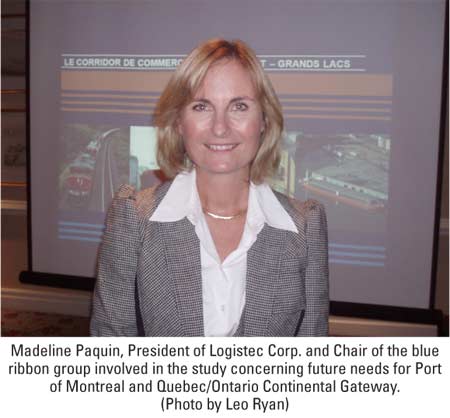
Study endorses Montreal as gateway container leader
By Leo Ryan, AJOTContainer activity should be concentrated and expanded at the Port of Montreal while bulk transshipment facilities at the Port of Quebec should be significantly enlarged to meet world demand. Such are the key recommendations of a two-year, private sector St. Lawrence and Great Lakes Trade Gateway Study.
The study was undertaken to act as a contribution to the Ontario-Quebec Continental Gateway government initiative, and seeks to assess the main needs of cargo transportation in the region for the next 15 to 20 years. Some 75 participants from 50 companies took part in the consultant study of the IBI Group.
“The fact that we were able to gather to gather as many participants and reach a consensus within three transportation modes deserves to be underlined,” stated Madeleine Paquin, President of Logistec Corporation and Chair of the St. Lawrence and Great Lakes Trade Gateway Leadership Council.






